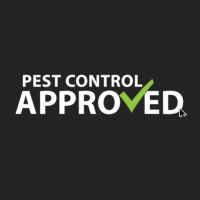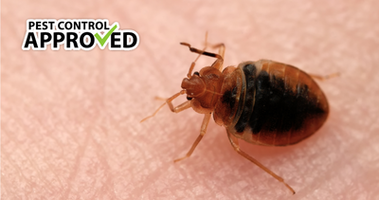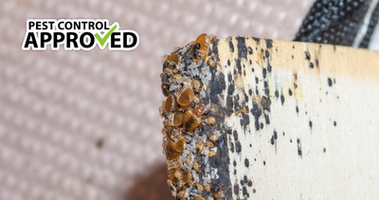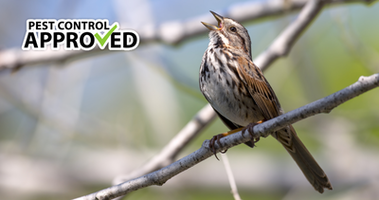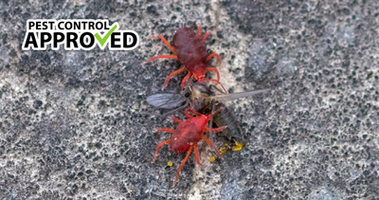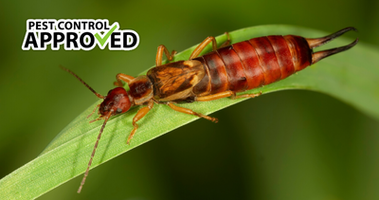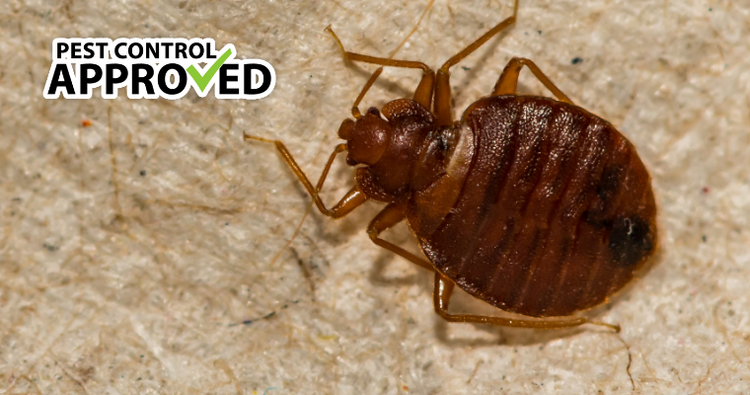
Bed bugs are small insects in the Cimicidae family that primarily feed on human blood. They will travel long distances at night to feed on their hosts. This feeding takes around ten minutes so a mild infestation can have few signs aside from bug bites. Bed bugs can reproduce and spread quickly, making quick identification and elimination essential.
What do Bed Bugs Look Like?
Bed bugs are the size of an apple seed or about 4 mm. They are normally reddish-brown, but they turn are bright red and rounded shortly after feeding. Bed bugs have three segments: head, thorax, and abdomen. Their head contains two antennae, mouth parts, and compound eyes. The thorax contains two sets of legs. Young bedbugs, called nymphs are harder to see. They are smaller than an apple seed, white to yellow and translucent. Bed bug eggs are the size of a pinhead and best viewed with a magnifying glass. They are pearly white and have a dark spot called an eye spot shortly before hatching.
Signs of a Bed Beg Infestation
There are five key signs of an infestation:
- Live Bugs
- Fecal Pellets
- Reddish Blood Stains / Spots
- Eggs
- Molted Exoskeleton
- Skin Rashes & Bites
Live bugs include the adults and the young bed bugs, called nymphs. Nymphs are less common in mild infestations. Fecal pellets are tiny black circles about the size of a pencil tip. They appear in clusters, often on bedding. They can be pure black or rust coloured. When rubbed with a damp cloth, they will smear. Eggs and molted exoskeletons appear in more advanced infestations. Bed bugs are invertebrates which means they have an exterior skeleton. As they age, they shed this exoskeleton. A bed bug exoskeleton is a small clear or yellow-ish white shed skin. In an advanced infestation, piles of exoskeletons are found.
Where Do Bed Bugs Hide?
One of the first things to inspect any new items that were introduced into your home or properly recently. An infestation is likely to occur when new items are brought into a home. Thoroughly inspect new furniture and any luggage when returning home from a trip. See our Complete Bed Bug Guide for tips on preventing bed bugs.
To inspect your new furniture, you will need a flashlight and magnifying glass. Carefully go over the furniture, paying special attention to the seams and crevices. On couches or chairs, remove cushions and unzip the protective covers. Carefully look for bugs in the interior of the cushions. Look for fecal smears on the outside of couches or mattress cushions. Use your flashlight to peer into the back, sides, and bottom of the couch or chair. On wooden furniture, carefully inspect the seams and joints, particularly behind any drawers. Bed bug eggs as well as live bugs are likely hiding in these locations.
When searching for bed bugs, a room by room approach is best. Begin in the bedroom. Bedbugs often live near places where humans sleep. They can be commonly found in and around mattresses. When bed bugs feed, they often leave behind droplets of blood. These will look like tiny red circles and will usually be on sheets or mattresses. Carefully inspect the sheets and quilt for any small bloodstains before removing them. Next, look at the mattress itself. If it is a foam mattress, it is unlikely to harbor live bed bugs. Bed bugs cannot live inside foam mattresses although they can be found on the seams and on the bedframe. Carefully inspect the mattress for bloodstains and feces. Bed bug feces is small and black. Feces are most likely found around the mattress seams and the corners. Also look for bed bug exoskeletons. These are shed skins that are yellowish-white. They may be hard to see with the naked eye unless the infestation is advanced. Live bugs will also be found along seams, corners, and near the headboard.
Once the mattress has been searched, search the box spring in the same manner. Pay attention to the bedframe, especially if it has sharp edges. Bedframes frequently harbor eggs and live bugs. Other furniture in the bedroom should be checked in a similar manner including the bedframe, bedside tables, dressers, and shelving. Focus on the cracks and joints of all furniture.
Next, check the walls, floors, and ceilings of the room. Pay attention to posters, paintings, and wallpaper. Use a magnifying glass to check behind them for exoskeletons, eggs, and live bugs. Check baseboards and electrical outlets as well. They are a frequent spot for bed bugs to reside. Any curtains should be carefully looked over and washed. Baseboards and carpet edges should be carefully pulled up and looked under. The junctions where the floors, walls, and ceilings meet should also be carefully and thoroughly inspected. Those areas are a frequent hiding spot for bed bugs. Thoroughly go over every area with a flashlight and magnifying glass. Bed bugs have even been known to hide in the head of a screw! Once the bedroom has been thoroughly inspected, move on to other rooms in the house. Make sure to look over every nook and cranny carefully with a flashlight and magnifying glass.
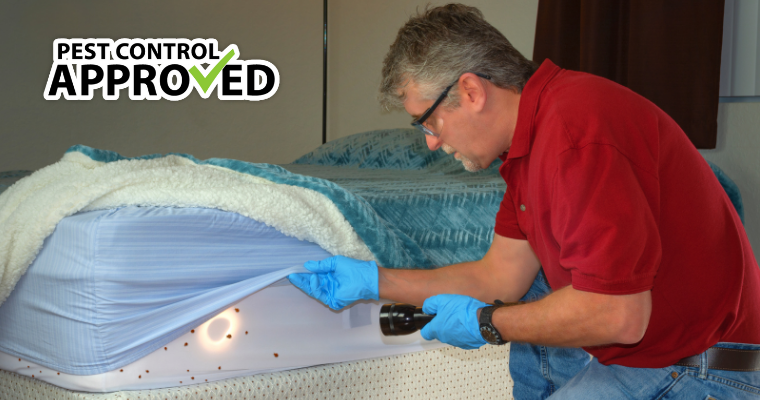
Degrees Of A Bed Bug Infestation
The degree of infestation depends on three factors:
- Number of bugs, eggs, and nymphs
- Duration of the infestation
- Spread of infestation.
Mild Infestation
A mild infestation is a new infestation. The bed bugs have only arrived in the last couple months. Few bugs, bloodstains, and eggs are found. Most bed bugs are adults. Feces are only found in the small areas called hot spots. There are one to two hot spots in the home, often in newly arrived furniture or suitcases. Few eggs and nymphs are found and only in select locations. These infestations can be treated fairly easily.
Moderate Infestation
A moderate infestation is an infestation that has gone on for four to eight months. There are many hot spots including beds and couches. Most furniture is stained. Many live adults and nymphs are found in the hotspots. There are bloodstains on the walls and mattresses. Live insects are found in most common areas. Visible fecal stains now cover multiple spots and shed exoskeletons are easy to see in places such as bedframes and sheets. These exoskeletons number in the hundreds. At this stage, the bed bugs may pose a thread to neighboring apartments.
Heavy Infestation
A heavy infestation is one that has occurred for over six months to a year. There are more adults and nymphs than can be counted. Clusters of dead and live bugs are found throughout the home. Dead bugs and blood are found everywhere, especially on mattresses, sheets, and walls. Heavy fecal stains appear on many areas. The stains look like smears of black paint. At this stage, a thick, sweet smell is noticeable. The sleeping areas are the most heavily effected, but the walls, ceilings, and floors are covered with feces, dead and live bugs, eggs, and blood stains. Exoskeletons are numerous enough to be spotted with the naked eye and piles of eggs are easily visible on mattresses, couches, furniture, and around hotspots. The infestation is likely to spread to nearby dwellings. A thorough and deep extermination is necessary.
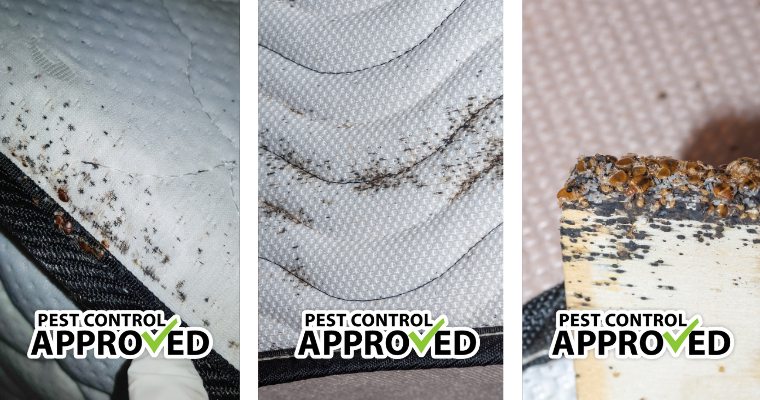
Cleaning Is Key To Spot Bed Bug Infestations
Keep your home tidy. Never leave items like papers, magazines, books, or clothing lying on the floor and always clean up spilled food. Regularly vacuum and wash flooring, rugs, furniture, curtains, and bedding. Bed bugs can hide in small gaps in wallpaper or flooring. Glue down wallpaper and fill in spaces in wood furniture. Seal all cracks and crevices throughout the home. Always keep your mattress and box spring covered with a bed bug cover and wash sheets regularly.
Don’t Bring Bed Bugs Home
Be careful when coming home from vacations. Bed bugs may travel in your suitcases and clothing. If possible, seal all items in plastic bags before returning home. Wash your clothing right away with hot water and dry them with high heat in the dryer. If it is hot outside, leave your suitcase and items in the car. The heat will kill the bed bugs.
While on vacation, carefully check your hotel or other residence for bed bugs using the guide above. When able, avoid placing your suitcase on the ground.
When buying second-hand furniture or clothing, carefully inspect it for bed bugs and wash it right away. For furniture, a steam cleaner works best but some furniture cleaners may kill bed bugs. For clothing, wash the clothing right away in hot water and put it in the dryer on high heat.

